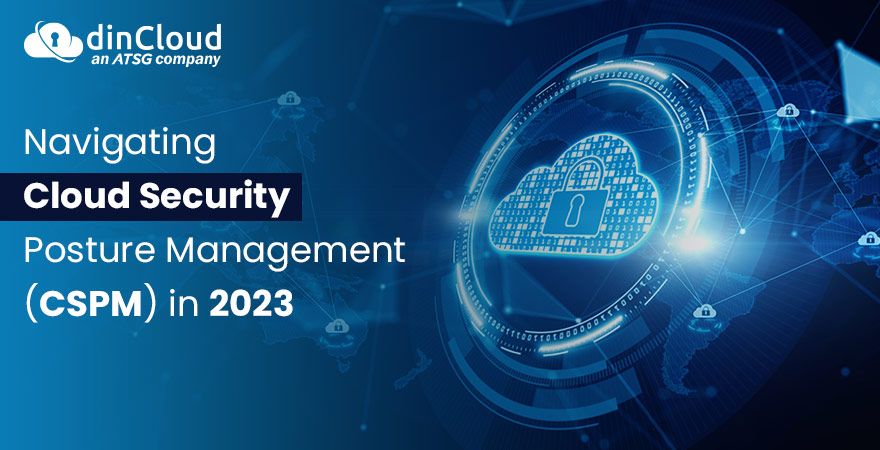The year 2022 has been all about the consolidation of IT infrastructures and optimizing their performance. Cloud Computing solutions have continued to play a leading role in modernizing IT infrastructures and achieving fast-paced digital transformation.
With a constant increase in the “Cloud Footprint” of enterprises, the overall threat surface has also admittedly increased. Secondly, cyber miscreants consider Cloud infrastructures as a “prized target”, especially public cloud platforms.
Successfully circumventing the cyber security protocols of even a single public cloud provider can unleash the data and other critical digital assets of numerous organizations. This has resulted in cloud infrastructures becoming the target of a record number of cyber attacks, ranging from basic ones, to even highly sophisticated ones.

However, the cyber security measures and protocols of leading Cloud Service Providers (CSP), like dinCloud, have “stood the test of time”. This by no means implies that the threat is not real, or that it has subsided anywhere. Cybercriminals are constantly on the lookout for spotting, and capitalizing upon even the slightest “cracks” within your cyber security posture.
In this post, we will discuss the ways and means to navigate the Cloud Security Posture Management (CSPM) challenges for the upcoming year 2023.
What is Cloud Security Posture Management (CSPM)?
CSPM is the sum total of all the tools, protocols, and mechanisms in place that a Cloud Service Provider (CSP), and a tenant enterprise, deploy to prevent the cloud infrastructure from any cyber security incident, such as a breach.
In addition to the above central roles of Cloud Security Posture Management (CSPM), there are two equally important elements. Those include the ability of the cyber security tools to identify any misconfiguration and to address any regulatory compliance-related risks.
Related Posts
- How to Approach Cloud Security in a Holistic Way?
- A Blueprint of Cloud Security Budgets for the Year 2023
- Cloud Security and Cyber Security – The Similarities & Differences
The Shared Responsibility Model at the Core
Before we explore the concept of Cloud Security Posture Management (CSPM), let us first understand the underlying presumption on which cloud security is built. Cloud security works under the “shared responsibility” model.
What this implies for a cloud-deploying enterprise is that the security of the cloud infrastructure bit will be handled by the Cloud Service Provider (CSP), while the data, policies, governance protocols, user access rights, etc. will be handled by the deploying enterprise.
Enterprises tend to go wrong at this very initial, yet critical aspect of how cloud security actually works. Most enterprises that deploy the Cloud tend to mistakenly presume that cyber security will be the domain of the Cloud Service Provider (CSP) in its entirety.
This is one of the reasons why recent research has shown that most cyber miscreants are targeting the enterprise side of the cloud infrastructure more rigorously, and aggressively. It is important that enterprises prioritize their bit of the cloud environment, and assist the cloud provider in delivering a cloud solution with robust cyber security.
Now, let us discuss a few other core elements of a robust Cloud Security Posture.
Risk Identification and Remediation
This is a very vital element of CSPM, as it is of utmost importance that an enterprise and its employees are well aware of where cyber security risks are actually originating from. This information will vary across industries, the operations model, and the size of the organization.
Nonetheless, once the sources of cyber security and data breach-related risks have been identified, it becomes really easy to initiate the remediation process. Now, remediation will further comprise two key elements, which need to be worked upon equally by any enterprise that desires to attain a robust Cloud Security Posture.
The foremost emphasis should be on the prevention side, which will be a combination of both the right set of tools and employee sensitization as well as rigorous training. The other, equally important aspect of risk remediation will be cyber security incident response. For this, there need to be well-defined, empowered, and competent cross-functional teams that will immediately come into action in the event of a cyber security incident.
Cloud Security Posture Management via Automation
As the size, scope, and application of cloud infrastructures constantly rise, it is vital that the human element within Cloud Security be “scaled down”. This by no means implies that the human element in Cyber Security Posture Management has become completely redundant. Instead, Automation is acting as a much more effective and efficient means of attaining a robust cloud security posture.
Cloud security automation tools need to strike a balance between technologies like Machine Learning (ML) and Artificial Intelligence (AI), to be able to effectively identify any anomalies/ observed across the cloud infrastructure, or the enterprise network. Automating the security bit of cloud environments will otherwise reduce, if not eliminate, the element of human error that normally results in easily avoidable security misconfigurations.
Conclusion
With the constantly rising influence of Cloud Computing solutions, infrastructures, and architectures, Cloud Security Posture Management (CSPM) is being thrust into the limelight. It is imperative that enterprises invest the right amount of time and human resources on this side, and avert the mid to long-term adverse impact of cyber security incidents.


